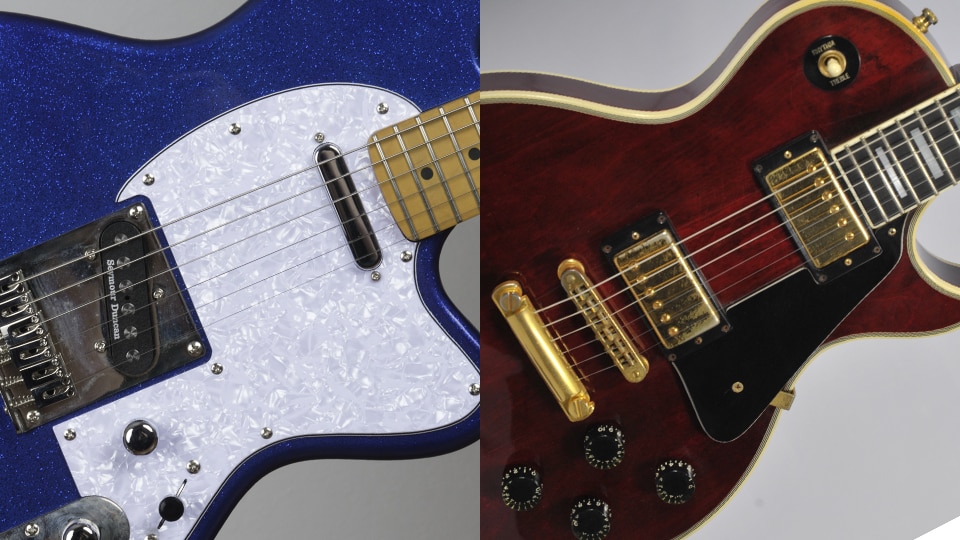What is "good tone" and how do you achieve it? Ask any ten people and you’ll almost certainly get ten different answers. Most guitarists will agree that factors such as the type and brand of guitar (acoustic vs. electric, Gibson vs. Fender, neck-through vs. bolt-on, the type of wood, etc.), the type and brand of amplifier used (tube vs. solid state), and the amp’s settings for EQ and gain. What is less obvious are the factors that are always in the player’s control and make a noticeable impact regardless of the particular guitar or amplifier used.
![[RS+] buy knobs](http://staticctf.ubisoft.com/J3yJr34U2pZ2Ieem48Dwy9uqj5PNUQTn/6hU3YTdck0QIEpimVQ5Hf0/963c043f0c3f1caf7991405f715c965d/-RS_-_buy_knobs.jpg)
Tone knobs and the pickup selector switch let you adjust the character, timbre, and dynamics of your guitar. Don't forget them!
1.Pick-up switch setting
One can argue until the cows go home about what brand of pickups to buy, or whether single coil, humbuckers, active or passive pickups sound better. But a quick switch from the neck to the bridge pickup (or somewhere in-between) can transform your riff from a laid-back warm melody to a searing lead in seconds. Tone knobs create a similar effect but in a more gradual way, but there's a good chance your guitar can make a wider range of tones than you're letting it.
![[RS+] 3 Ways To Improve Your Tone](http://staticctf.ubisoft.com/J3yJr34U2pZ2Ieem48Dwy9uqj5PNUQTn/6tsdkRc8R4YajTg0FVyZwg/4a2b97837c49528329e35d1c6732fe40/picks_960.jpg)
The size, shape, and material of the pick – combined with how you hold it – makes a difference too.
2.Picks and picking style
Heavy or light picks? Sharply pointed or rounded? Heavier picks allow for louder playing and light picks provide a softer attack, but picking angle and grip are just as important. The more the pick protrudes outward from your index finger and thumb, the less control you have over the pick which adds unwanted scraping noises and an overall mushier sound.
![[RS+] buy action](http://staticctf.ubisoft.com/J3yJr34U2pZ2Ieem48Dwy9uqj5PNUQTn/3T1JrCq8yB47kljQebCVpW/864cfa07f9e82fbf394bfcc846f5cf54/-RS_-_buy_action.jpg)
*Thick or thin, wound or flat – your string choice can have a huge effect on your tone. *
3.String choice
Thinner strings may offer thinner tone – it depends on your technique and other gear, really – but light gauge strings are generally easier to play, especially on solos with big bends. Palm muting and tremolo picking (rapid up-and-down motion on a string) are easier with heavier strings. Fleet-fingered lead players tend to prefer the former and heavy-handed rhythm players like the latter, but changing the effort it takes to pluck or strum your strings can in turn change your sound.
String construction matters too: Roundwound strings offer a bright tone, but add more finger squeak. They are ubiquitous now, but weren't invented until 1962. Prior to that, flatwound strings were the standard; they'rere mellower and more difficult to bend, but sometimes preferred by jazz or retro players today. Neither is wrong, so it's worth experimenting – buy a few packs of different gauges and construction, and you may find a really inspiring new flavor of tone.
Some folks believe they must spend thousands of dollars to achieve that elusive "good tone,", but tone isn't something you buy so much as develop. The most important factor affecting your tone is YOU and how you play. The tips above apply to any guitar or player – and the best part is that most of them won’t cost you a dime!
Leila Abdul-Rauf is a multi-instrumentalist and composer based in Oakland, CA. Over the past two decades, Leila has performed live and released albums for countless music projects and tours internationally. Also a private guitar and voice teacher, Leila was recently included in Guitar World's 25 best metal guitar tones of all time.
Switch/knobs and string photos by Katrin Auch
Pick photos by Leila Abdul-Rauf
__Rocksmith+ can help you learn about gear, technique, history, and much more. Join us for the next step on your musical journey. __



